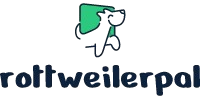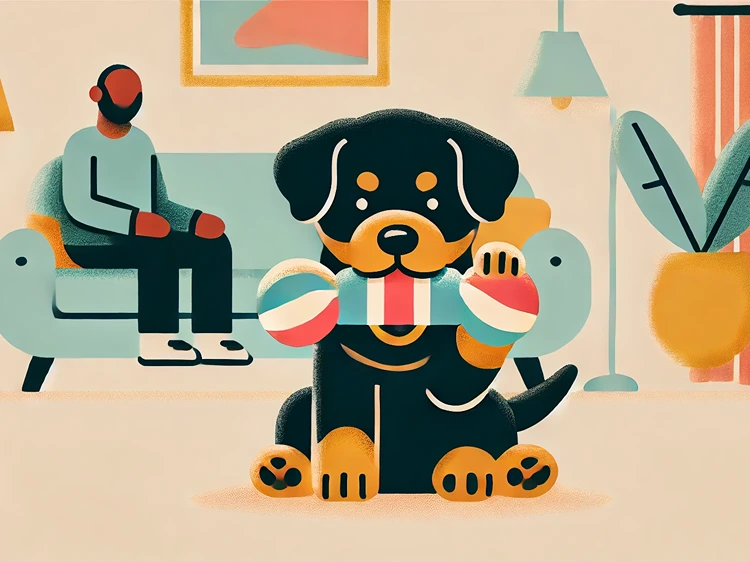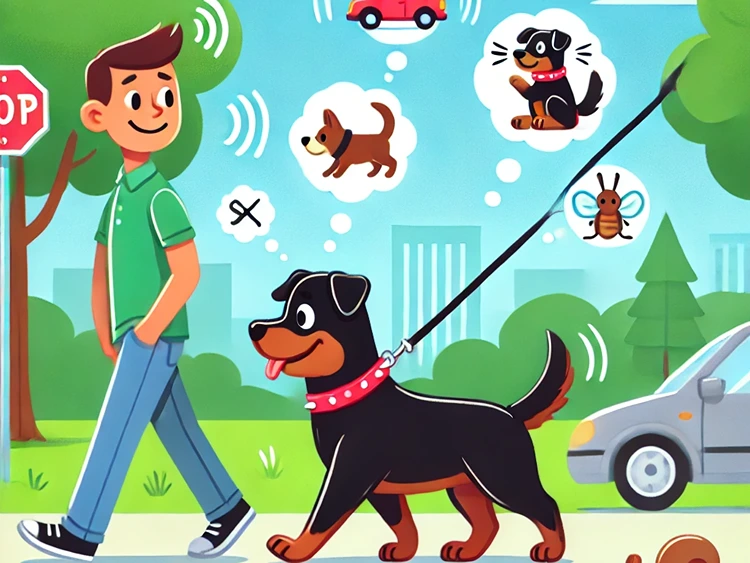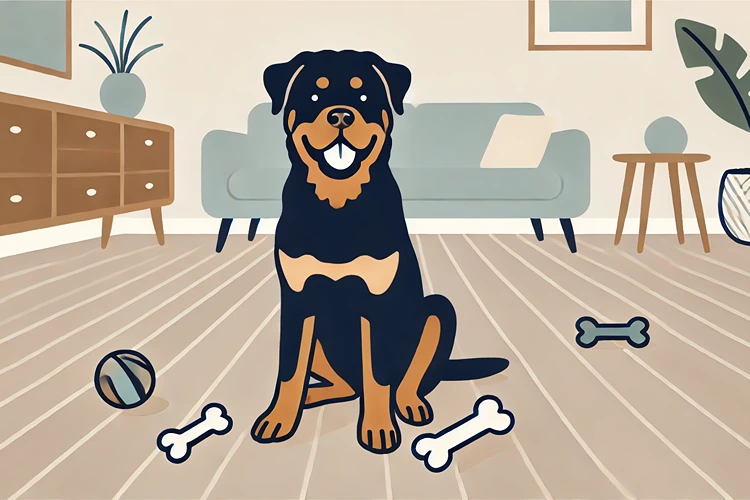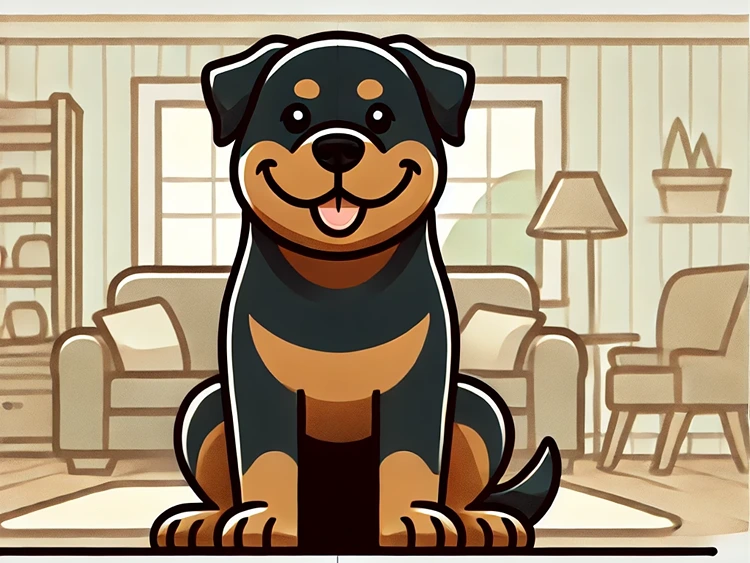Training your Rottweiler puppy is one of the most rewarding experiences you can have as a dog owner. But what’s the best way to train them? Positive reinforcement training is a method that focuses on rewarding your puppy for good behavior, rather than punishing them for mistakes. This approach not only builds trust and a strong bond between you and your Rottie but also creates a happy and well-behaved dog.
In this guide, we’ll explore everything you need to know about positive reinforcement training for Rottweiler puppies. From understanding the basics to practical tips and techniques, we’ll cover it all. Whether you’re a first-time Rottie owner or just looking to refine your training approach, this guide will give you the tools to succeed.
Why Choose Positive Reinforcement Training?
So why should you choose positive reinforcement training for your Rottweiler puppy? Unlike traditional training methods that rely on punishment, positive reinforcement focuses on rewarding desirable behavior. This not only makes training a more enjoyable experience for your puppy but also encourages them to repeat the behavior you want to see.
Positive reinforcement training is especially effective for Rottweilers because it aligns with their natural instincts. Rottweilers are intelligent, loyal, and eager to please. By using positive reinforcement, you tap into these traits and create a training environment that is both effective and fun for your pup.
Rottie Stats:
Studies show that dogs trained with positive reinforcement learn commands faster and are more likely to obey them compared to those trained with punishment-based methods. This is particularly true for breeds like Rottweilers, who thrive on positive interactions with their owners.
How Does Positive Reinforcement Work?
Positive reinforcement is all about timing and consistency. When your Rottweiler puppy performs a behavior you like, you immediately reward them with something they love, like a treat, praise, or playtime. The key is to reward the behavior as soon as it happens so your puppy can make the connection between the action and the reward.
Consistency is also crucial. You need to reinforce the same behavior every time it occurs to help your puppy understand what’s expected of them. Over time, your Rottweiler will learn to associate certain actions with positive outcomes, and they’ll be more likely to repeat those actions.
Rottweiler Puppy Reward Preferences
| Type of Reward | Effectiveness | Examples |
|---|---|---|
| High-Value Treats | Very High | Chicken, Cheese, Freeze-dried Liver |
| Verbal Praise | High | “Good boy/girl!”, “Well done!” |
| Playtime | Moderate | Fetch, Tug-of-War |
| Petting | Moderate | Belly Rubs, Ear Scratches |
| Clicker Sound | High (when paired with a treat) | Clicker Training |
What Kind of Rewards Should You Use?
When it comes to positive reinforcement, the type of reward you use can make a big difference. Rottweiler puppies are highly food-motivated, so treats are often the most effective reward. However, not all treats are created equal. High-value treats, like small pieces of chicken or cheese, are more likely to grab your puppy’s attention than regular kibble.
In addition to treats, you can use praise, petting, or a favorite toy as a reward. The key is to find out what your puppy values the most and use that to your advantage during training sessions.
Paw-some Tip:
Vary the rewards you use to keep your Rottweiler puppy engaged. Sometimes, a tasty treat works best, but other times, a few minutes of playtime or a belly rub can be just as effective. The more you mix it up, the more motivated your pup will be to keep learning!
When Should You Start Training Your Rottweiler Puppy?
The earlier you start training your Rottweiler puppy, the better. Puppies are most receptive to learning between the ages of 8 to 16 weeks, but you can begin positive reinforcement training as soon as you bring your puppy home. Starting early helps establish good behavior patterns from the beginning, making it easier to manage your puppy as they grow.
Even if your Rottweiler is a bit older, it’s never too late to start positive reinforcement training. Older puppies and even adult dogs can still benefit from this training method, although it might take a bit more time and patience.
What Are the Basic Commands to Teach Your Rottweiler Puppy?
When starting positive reinforcement training with your Rottweiler puppy, it’s important to focus on the basics. Teaching commands like “sit,” “stay,” and “come” will lay the foundation for more advanced training later on.
Here’s a quick rundown of some essential commands:
- Sit: This is often the first command puppies learn. It’s simple and serves as a great way to get your puppy’s attention.
- Stay: Teaching your puppy to stay is important for their safety. Start with short stays and gradually increase the duration.
- Come: A reliable recall can prevent your puppy from getting into dangerous situations. Always reward them heavily when they come to you.
These basic commands are crucial for managing your Rottweiler’s behavior and ensuring they respond well to your guidance.
How to Use Positive Reinforcement for House Training
House training is one of the first challenges you’ll face with your Rottweiler puppy, and positive reinforcement can make the process smoother and quicker. Start by establishing a regular routine for feeding, potty breaks, and playtime. Consistency is key in helping your puppy learn when and where it’s appropriate to go to the bathroom.
When your puppy successfully goes potty in the right spot, immediately reward them with a treat and lots of praise. Over time, they’ll associate going outside with positive outcomes and will be more likely to repeat the behavior.
It’s also important to supervise your puppy closely indoors and take them outside frequently, especially after meals or naps. If you catch your puppy in the act of going potty indoors, calmly interrupt them and take them outside to finish. Always reward them if they complete the task outside.
Paw-some Tip:
Keep a close eye on your Rottweiler puppy’s body language. Signs like sniffing the floor or circling often indicate they need to go potty. By being proactive and taking them outside right away, you can prevent accidents and reinforce good habits.
What to Do When Your Rottweiler Puppy Makes Mistakes
Mistakes are a normal part of the training process, especially with a young puppy. It’s important to remember that positive reinforcement training focuses on rewarding good behavior, not punishing bad behavior. If your Rottweiler puppy has an accident or doesn’t follow a command, stay calm and avoid scolding them.
Instead, redirect their attention to the desired behavior and reward them when they get it right. For example, if your puppy jumps up on guests, gently guide them into a sitting position and reward them for sitting calmly. Over time, your puppy will learn that sitting, not jumping, earns them praise and treats.
Consistency and patience are key. Mistakes will happen, but with positive reinforcement, your Rottweiler puppy will learn what’s expected of them without the stress and anxiety that punishment can cause.
How to Address Common Behavior Issues with Positive Reinforcement
Rottweilers, like all breeds, can develop certain behavior issues if not properly trained. Common issues include excessive barking, chewing, and jumping. The good news is that positive reinforcement can effectively address these problems.
Excessive Barking
Rottweilers are known to be vocal, especially when they feel protective. However, excessive barking can become a nuisance. To curb this behavior, start by identifying the triggers. Is your puppy barking at strangers, other dogs, or noises? Once you know what’s causing the barking, you can work on desensitizing your puppy to the trigger.
When your puppy starts barking, calmly redirect their attention to you and give them a command like “quiet.” As soon as they stop barking, reward them with a treat and praise. With time, they’ll learn that staying quiet leads to positive outcomes.
Chewing
Chewing is a natural behavior for puppies, especially when they’re teething. However, it can become problematic if your Rottweiler puppy starts chewing on furniture or other inappropriate items. The key to addressing this issue is to provide plenty of appropriate chew toys and to redirect your puppy’s attention to these toys whenever they start chewing on something they shouldn’t.
When you catch your puppy chewing on something inappropriate, gently take the item away and replace it with a chew toy. As soon as they start chewing on the toy, reward them with praise or a treat. Over time, your puppy will learn to seek out their toys instead of your furniture.
Jumping
Jumping is a common behavior in puppies as they try to greet people and get attention. While it may seem cute when they’re small, it can become problematic as your Rottweiler grows. To discourage jumping, avoid giving attention when your puppy jumps on you. Instead, wait until all four paws are on the ground, then reward them with attention and praise.
If your puppy continues to jump, you can also teach the “sit” command and only give them attention when they’re sitting calmly. By consistently reinforcing this behavior, your puppy will learn that sitting, not jumping, is the way to get your attention.
How to Incorporate Training into Everyday Life
Positive reinforcement training doesn’t have to be limited to formal training sessions. You can incorporate training into your daily routine to reinforce good behavior consistently. For example, ask your Rottweiler puppy to “sit” before feeding them or to “stay” before opening the door for a walk. These small moments add up and help your puppy learn to follow commands in various situations.
Training throughout the day also keeps your puppy engaged and mentally stimulated, which is especially important for a breed as intelligent as the Rottweiler. By making training a natural part of your daily interactions, you’ll build a stronger bond with your puppy and reinforce positive behavior without making it feel like a chore.
FAQs
Wrapping Up
Positive reinforcement training is a powerful and effective way to guide your Rottweiler puppy’s behavior, helping them grow into a well-mannered and confident dog. By focusing on rewarding good behavior, you create a positive learning environment that strengthens the bond between you and your puppy. From basic commands to addressing common behavior issues, this approach ensures that training is both enjoyable and successful.
Remember, the key to effective training is consistency, patience, and understanding your puppy’s unique needs. Whether you’re house training, teaching basic commands, or working on socialization, positive reinforcement provides a foundation for lifelong good behavior. Start early, keep the sessions short and engaging, and always celebrate your puppy’s progress. By doing so, you’ll raise a Rottweiler that not only listens but also loves to learn.
As you continue your journey with your Rottweiler, keep exploring new training techniques and adapt your methods to suit your puppy’s personality. With dedication and love, your Rottweiler will become a well-behaved and loyal companion, eager to share in the joys of life with you.
